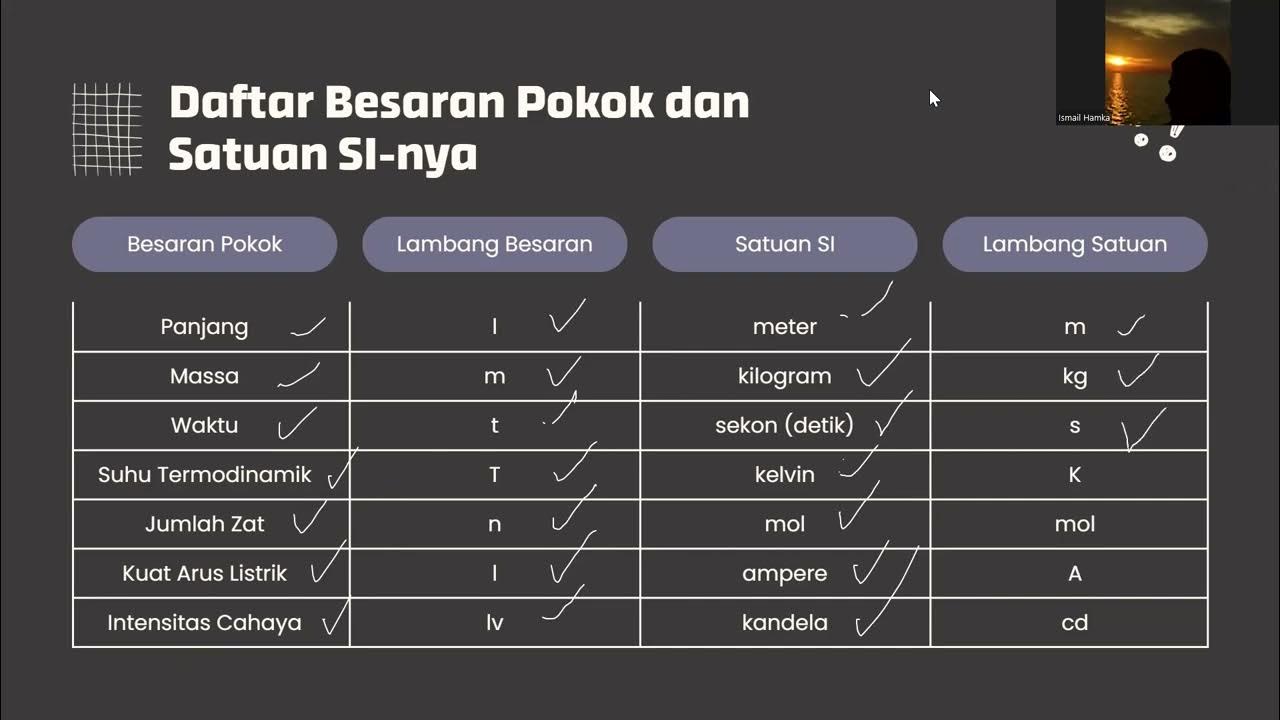Pengukuran (Waktu, Berat dan Panjang) || Kelas 3 SD/MI || Dengan alat peraga (Media Pembelajaran)
Summary
TLDRIn this video, Amaliah presents an educational session on time, weight, and length measurement for 3rd-grade students in Cirebon. The content includes an explanation of how to use time-measuring tools like analog and digital clocks, and introduces the concept of time, weight, and length conversion. Through a series of examples, the video highlights the difficulties faced by students with these topics, offering a clear guide on how to tackle measurement problems. The lesson concludes with practical exercises on converting between different units of time, weight, and length, aiming to make learning these concepts more accessible and understandable.
Takeaways
- 😀 Introduction: Amaliah, a student from the teacher education program, explains the purpose of the video to fulfill the UAS requirement for her mathematics learning course.
- 😀 The video focuses on teaching third-grade students about measuring time, weight, and length.
- 😀 The use of different time-measuring tools, including analog clocks, digital clocks, stopwatches, and calendars, is explained.
- 😀 A key concept introduced is that there are 24 hours in a day, split into two 12-hour periods (AM and PM).
- 😀 Time is divided into minutes and seconds, with the video explaining how to read an analog clock and understand its markings.
- 😀 Rounding time to the nearest hour or half-hour is demonstrated with examples, highlighting when to round up or down.
- 😀 The video explains the concept of weight measurement using scales and conversions between units such as kilograms, grams, and ounces.
- 😀 A conversion chart is provided for weight measurements, explaining how to go from one unit to another (e.g., 1 kg = 1000 g).
- 😀 The concept of length measurement is introduced using rulers and measuring tapes, along with conversions between units like kilometers, meters, and centimeters.
- 😀 The video provides practice problems to help students apply their knowledge of converting between units of time, weight, and length.
- 😀 Amaliah concludes by encouraging students to understand the material and practice the problems to improve their measurement skills.
Q & A
What is the main purpose of the video?
-The main purpose of the video is to explain the challenges students face when learning time, length, and weight measurements, and to provide solutions for overcoming these challenges.
What difficulties did the students face according to the observations?
-The students faced difficulties in solving problems related to time, weight, and length measurements. Specifically, they were unable to solve some problems related to time measurement and struggled with problems involving weight and length.
What are the tools used to measure time in the script?
-The tools used to measure time include analog clocks, digital clocks, stopwatches, and calendars.
How is time measured using an analog clock?
-Time is measured using an analog clock with two hands: the short hand indicates the hour, and the long hand indicates the minutes. Each number on the clock represents a multiple of five minutes for the minute hand.
What is the rule for rounding time in this video?
-The rule for rounding time is that if the excess time is less than 30 minutes, it is rounded down to the nearest hour. If the excess time is more than 30 minutes, it is rounded up to the next hour.
What are the basic time unit conversions mentioned in the video?
-The video mentions the following time unit conversions: 1 minute = 60 seconds, 1 hour = 60 minutes, 1 day = 24 hours, 1 week = 7 days, 1 month = 4 weeks or approximately 30/31 days, and 1 year = 12 months.
What are the units used to measure weight in the video?
-The units used to measure weight include kilograms (kg), grams (g), and ounces (ons).
How do the units of weight relate to each other?
-The relationship between weight units is as follows: 1 kg = 10 ons, 1 kg = 1000 g, 1 ons = 1/10 kg, and 1 g = 1/1000 kg.
What method is used for converting between weight units?
-To convert between weight units, you either multiply or divide by 10 depending on whether you are moving up or down the weight scale. For example, to convert kilograms to grams, you multiply by 1000, and to convert grams to kilograms, you divide by 1000.
What is the significance of the weight measurement example involving fruit?
-The weight measurement example shows how to convert kilograms and ounces into a single unit, such as grams or ounces, in order to calculate the total weight of an item, in this case, 3 kg 4 ons of grapes.
How are length measurements converted in the video?
-Length measurements are converted using a scale where 1 kilometer (km) = 1000 meters (m), and smaller units like centimeters (cm) and millimeters (mm) are scaled accordingly. For example, 1 m = 100 cm and 1 cm = 10 mm.
What practical example is given for length measurements?
-A practical example is provided where three people have different lengths of rope, and the total length is calculated by converting the lengths into the same unit (centimeters) and then adding them together.
Outlines

This section is available to paid users only. Please upgrade to access this part.
Upgrade NowMindmap

This section is available to paid users only. Please upgrade to access this part.
Upgrade NowKeywords

This section is available to paid users only. Please upgrade to access this part.
Upgrade NowHighlights

This section is available to paid users only. Please upgrade to access this part.
Upgrade NowTranscripts

This section is available to paid users only. Please upgrade to access this part.
Upgrade NowBrowse More Related Video
5.0 / 5 (0 votes)





